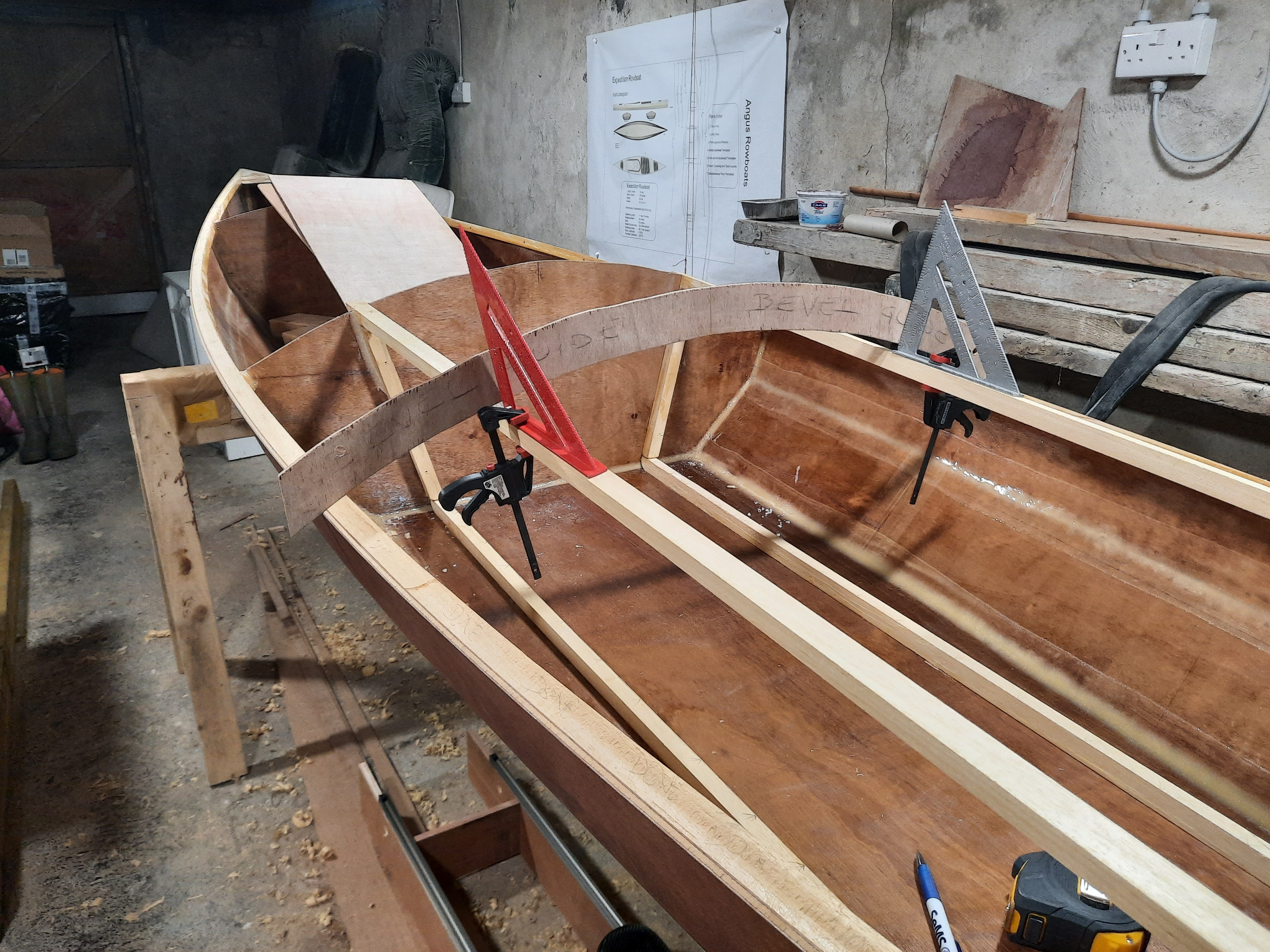Hello Colin.
Thanks for the prompt reply.
I still haven't got this straight in my head. I'll list out my thinking below and hopefully you'll be able to spot where I'm going wrong and steer me appropriately.
For simplicity I'll outline one side only.
I'm at the point where all four elements of the port stringer are epoxied in place. The Lower, the Forward and the Rear stringers are fixed throughout their entire lengths. The Upper stringer is fixed at one end to bulkhead 2, and at the other end to Bulkhead 3, and like you say above there is flex for it's middle section to move up and down.
Now I'll list what I expect will happen next.
1 - I'll epoxy in the side panel. I have tailored this to fit nicely along its bottom edge, and it's forward and read edges too. It is left too long along the top edge, the intent is I will trim this when the epoxy sets to get an exact fit.
2 - while clamping the side panel on place I'll ensure the Upper stringer is straight as an arrow (flowery language here but I hope you'll get the point).
3 - when epoxy sets I'll trim off excess side panel from above the Upper stringer to make the top edge straight and clean.
4 - I then move on to fixing the deck in place. I prepare all the associated bonging surfaces on the hull.
5 - (I'm building from plans, not kit). I take a sheet of material and sculpt it over the curves of Bulkhead 2 and 3. And fix it along the sheer clamps with copper nails or screws.
6 - when epoxy sets I'll use my jigsaw to cut out the ope for the cockpit.
7 - at this point I expect to see a significant gap (~10mm), between the upper edge of the side panel and the under surface of the deck. This gap is the crux of my issue.
Colin, I hope this list illustrates my [mis]understanding of the next few steps of my build, and that you can find what needs to be corrected.
To avoid clouding the issue I have omitted details like the wet epoxy on the underside, and the initial tough cut of the cockpit ope, etc
Thanks for the time you have already given to this.
Kind regards,
Tony




